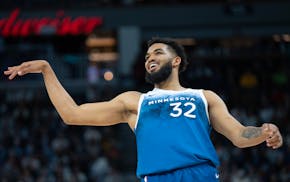The 1986 Twins were two months into a season that would lead to the firing of manager Ray Miller in September. It also led to an offseason in which Andy MacPhail was promoted to general manager, Bob Gebhard was hired as his main adviser and Tom Kelly went from interim to full-time manager.
The Twins took a 20-34 record into a Saturday game in Kansas City on June 7. Bert Blyleven was facing lefthander Danny Jackson, one of the heroes of the Royals' World Series title in the previous October.
This was Blyleven's second go-round with the Twins, and it would turn into a goofy season for the 35-year-old righthander. He would allow a major league record 50 home runs, and yet would finish 17-14 with a 4.01 ERA, 16 complete games, 271 2/3 innings and 215 strikeouts for a team that went 71-91.
What I remember most from Blyleven in 1986 were not the home runs, not the three shutouts that pushed his career total to 54 (on the way to 60), but the curveball that he threw to complete the game on that June evening in Kansas City.
Kent Hrbek had his first five-hit game and the Twins were leading 4-1 into the bottom of the ninth. Rudy Law singled, George Brett flied out, Jorge Orta singled and Steve Balboni grounded out.
This left runners at second and third and catcher Jim Sundberg at the plate. The count went to 2-2 and Sundberg was hoping that Blyleven might choose to throw a fastball. Instead, Blyleven threw a curve that was headed to Sundberg's chin, causing the veteran catcher to give ground in the righthanded batter's box.
And then this hook, delivered with Blyleven biting softly on his extended tongue, started to move downward and to the left. By the time plate umpire Don Denkinger punched the air for strike three, Sundberg was virtually sitting -- sitting! -- in the dirt of the Royals Stadium batter's box.
Later, in the clubhouse, the Twins were hooting it up, not so much over the victory, or Big Herbie's big night, or Blyleven avoiding a home run allowed for the first time in 12 starts, but for that curveball.
Roy Smalley, the veteran infielder, was taking particular delight in Sundberg's humiliation. "Nobody enjoys it more than that [danged] Sundberg to have Saberhagen or one of those guys bust out a slider in a fastball count," Smalley said. "Ol' Sunny thinks it's great to laugh at a hitter's misery. What do you think now, Sunny?"
Smalley was asked this week about the Blyleven hook to Sundberg in that long ago game in Kansas City, and he remembered.
"It wasn't the worst ever, though," Smalley said. "That was my old Twins teammate, Bobby Randall, when Bert was pitching for Texas. Bobby had a couple of strikes, and Bert threw one of those curves, and Bobby started backing up, and then he saw it was going to be a strike, and he let out a yelp and took this swing ...
"It was like the plate was a hunk of wood and Bobby had an ax. He chopped straight down. We were howlin' in the dugout. One of the funniest things I've ever seen in baseball ... all because of a Blyleven curveball."
The thing about the Blyleven curveball was it was equally devastating to righthanded and lefthanded hitters. In baseball folklore, the man most often referred to as "Captain Hook" was the late Sparky Anderson. The Hall of Fame manager was quick to remove pitchers long before that was fashionable.
Yet, when you to talk Reggie Jackson, the loquacious lefty slugger, there's only one Captain Hook -- and that was Blyleven.
Jackson knew of what he spoke. He had more at-bats (131) vs. Blyleven than any pitcher in his career. He got Bert for six home runs and 12 RBI. And Bert got him for a .214 average and 49 strikeouts.
Blyleven first became a source of conversation among Twins fans in the spring of 1970. Bill Rigney was the new manager, and a Sparky type -- in that his enthusiasm rapidly could turn into a gush.
And he was gushing about Blyleven, an 18-year-old third round draftee from Garden Grove, Calif., before ever seeing him pitch. The dialogue sent back from Orlando in the Twin Cities dailies went like this:
Pitching coach Marv Grissom: "You should see this kid's curveball."
Rigney: "Don't let me see him. I'll want to keep him."
And then Rigney saw him and, indeed, wanted to keep him. The Twins held off until early June, before summoning Blyleven -- two months after his 19th birthday -- and put him in starting rotation.
It was all peaches and cream between the kid and the Griffith organization then, but it didn't stay that way. Free agency was won and money became the game's centerpiece, and Blyleven was traded to Texas in ugly circumstances on June 1, 1976.
Smalley, a young Rangers infielder and the nephew of manager Gene Mauch, was the centerpiece of that trade. He also was traded by the Twins, to the Yankees in 1982. Both would return in 1985, and two years later, they would be part of a World Series champion -- Blyleven a huge part, as the co-ace with Frankie Viola.
It was an encore that put the Twins back in Blyleven's soul, and on Wednesday, the news finally came: The real Captain Hook will be going to the Hall of Fame.
He will be the fourth to put the Twins hat on the museum's wall, joining the exclusive group of Harmon Killebrew, Rod Carew and Kirby Puckett.
And when the statue appears outside Target Field, it will be of a lanky man, left leg stretched, tongue visible, with a curveball about ready to start its twisting journey. For me, it will be a curve headed at Jim Sundberg's chin, and then swoosh, strike three.
Patrick Reusse can be heard noon-4 weekdays on 1500ESPN. • preusse@startribune.com

Reusse: Wolves need stopper for Booker? NAW, it's not a problem.

Reusse: Success on court helped Timberwolves do strong business

Reusse: Taylor's story. 'I just bought the Minnesota Timberwolves.'

Reusse: Back from injury, Towns doesn't have to carry load


